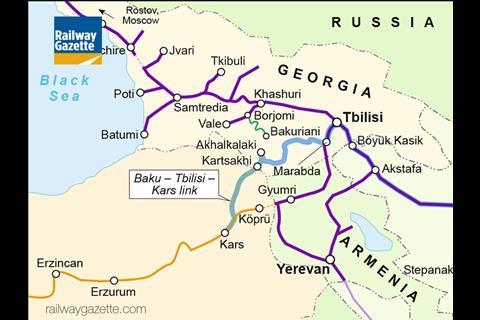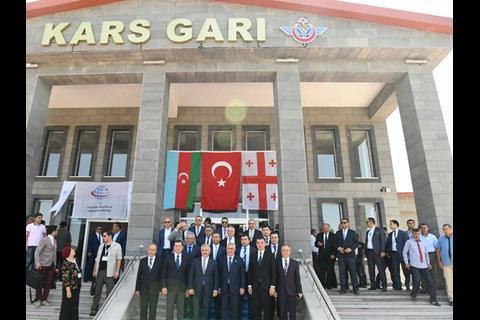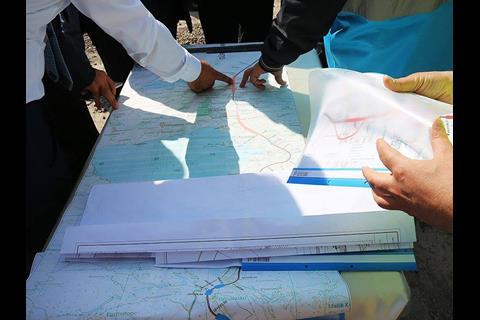TURKEY: A ceremonial first train ran on the Turkish section of the Baku – Tbilisi – Kars railway corridor on July 19, carrying Minister of Transport, Maritime & Communication Ahmet Arslan as well as Georgia’s Minister of Economy and the CEOs of the national railways of Georgia, Azerbaijan and Kazakhstan. The officials also inspected the tunnel across the Turkey – Georgia border as part of their visit.
‘We hope that this line, together with the Marmaray tunnel in Istanbul, will significantly increase the importance of the railway in this region, between Asia and Europe’, said Arslan. ‘This railway will increase co-operation in this region and expand trade.’
The 849 km BTK programme of route modernisation and new construction is designed to create a rail corridor from the Caspian Sea to Europe. This will replace the former route through Armenia which has been out of use since the Turkey – Armenia border crossing was closed in 1993.
The BTK project includes the construction of 110 km of new standard gauge line from Kars via the border at Kartsakhi to Akhalkalaki in Georgia, where there will be facilities for gauge changing and transhipment between the 1435 mm and 1520 mm networks. Özgün Yapı & Çelikler has built the 76 km section within Turkey under a YTL12·2bn contact. From Akhalkalaki 153 km of unused 1 520 mm gauge line to the junction at Marabda is being rehabilitated.
Completion of the corridor is expected later this year. The BTK route is expected to carry up to 500 000 TEU/year, and an agreement has now been reached for the construction of a freight terminal in Kars. Although the route is primarily intended to carry freight, Stadler is supplying Azerbaijan’s national railway ADY with a fleet of gauge-changing sleeping cars for a planned Baku – Istanbul passenger service.
- A detailed article on the Baku – Kars – Tbilisi railway project and its role in the wider development of Eurasian transport corridors appeared in the June 2017 issue of Railway Gazette International magazine, which subscribers can access in the digital archive.























